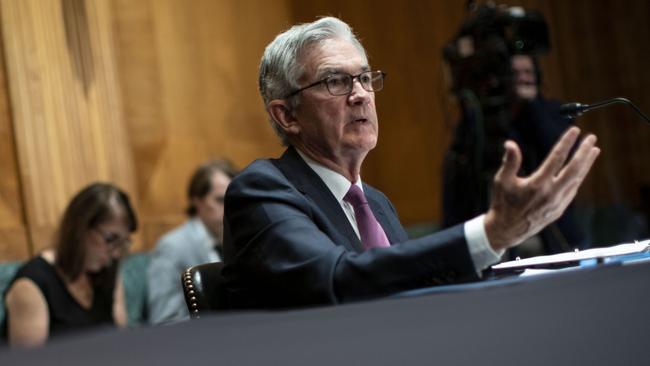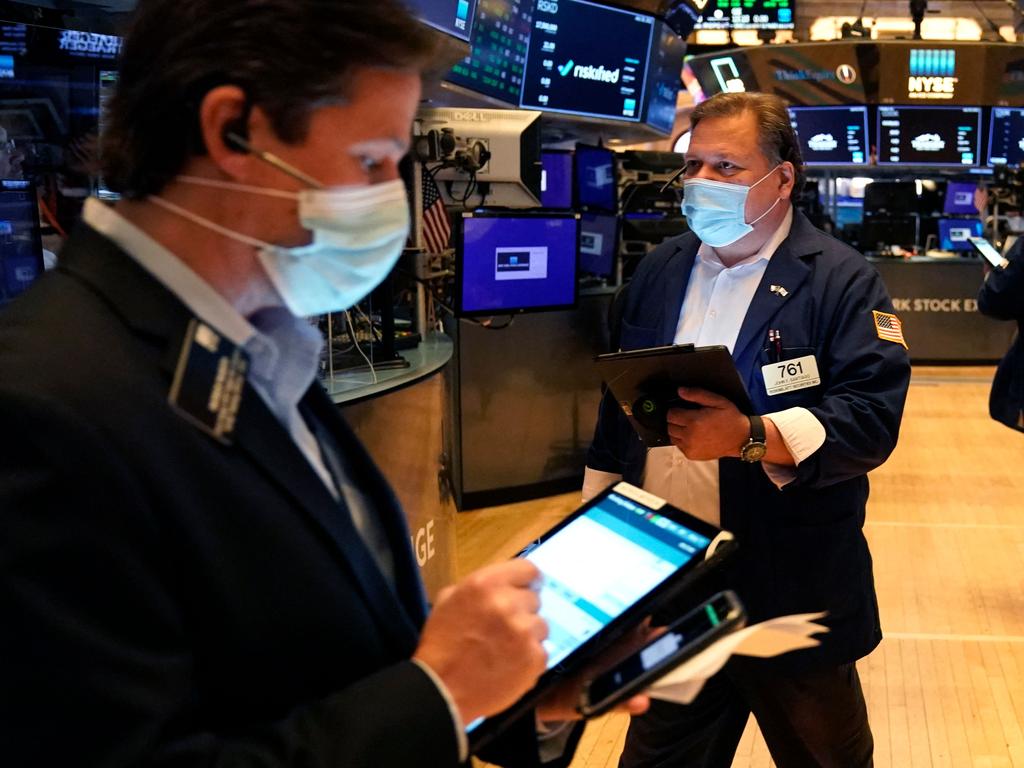US inflation data may test market’s resolve
So far so good for a year-end ‘melt-up’ in shares, but CPI data this week from the US may test investor resolve.

So far so good for a year-end “melt-up” in shares, but CPI data this week from the US may test investor resolve.
With the formal announcement of Fed tapering unable to spark a sell-off, US jobs data impressing, and bond yields down sharply after the Bank of England stayed pat after prepping the market for hikes, investors may put more cash to work in what has often been the best month of the year for US shares, even though October was very strong. A 6.9 per cent rise was the best this year.
But US sharemarket sentiment hit “extreme greed” recently according to CNN’s Fear & Greed Index. A few weeks before that it was near “extreme Fear” – as was also the case before the US election last November and the powerful 10.8 per cent rally that ensued that month.
It does argue for profit-taking at some point, but perhaps not before a melt up to new highs.
Wednesday’s release of October CPI data may have the potential to cause a dip before more cash is thrown at shares in an environment where FOMO (fear of missing out) and TINA (there is no alternative) continue to reign supreme, despite plans to “normalise” US monetary policy.
While talking about Fed policy and the potential for the CPI data to affect expectations on the pace of interest rate normalisation, it’s worth noting President Biden still hasn’t renominated Jay Powell as Fed chair. The market likes Powell and would rally if he’s reconfirmed, but may rally more if a bigger dove like Lael Brainard is nominated to appease progressives like Senator Warren.
Bloomberg’s consensus estimate is for a 0.6 per cent month-on-month rise in headline CPI, which would take the year-on-year rate to a 31-year high of 5.9 per cent.
CPI excluding food and energy is expected to rise 0.4 per cent on month and 4.3 per cent on year.
Anything above 4.48 per cent for core CPI would be the highest rate since early 1991.
“Due to very low price increases earlier this year, annual core CPI inflation may well lift further in coming months, potentially reaching 4.5 per cent by early 2022 if monthly gains remain around 0.2 per cent over this period,” says BetaShares chief economist David Bassanese.
“That in turn could keep financial markets nervous about the inflation outlook, even though the supply-chain related surge in prices – from April to June – has likely already passed.”
The bigger issue for US interest rates is whether the millions of former workers return to the labour force as the economy reopens, thereby easing staffing shortages and wage pressure.
“If labour force participation remains low – suggesting many may have chosen early retirement – the economy will face capacity constraints more quickly in 2022, which in turn could have the Fed raising rates later next year,” Bassanese says.
“At this stage, my base case is that US labour force participation will recover sufficiently to keep a lid on wage growth, allowing the Fed to delay raising rates until 2023.”
Citi has brought forward its view of US rates lift-off from late 2022 to mid 2022 but the bank’s US equity strategist Scott Chronert says investors should expect key US inflation indicators to peak in February and decelerate to levels closer to Fed inflation targets by mid-2022, so “current concerns and sentiment related to inflation expectations may peak over the next several months”.
In his view, the Fed’s taper announcement was “largely priced in”, which fits with the market movements after the FOMC meeting. But it also “signals that investors will likely need to re-evaluate inflation playbooks”.
He looks for a “gradual supply-chain improvement to trigger a tactical rally in economically sensitive areas of the market, supporting a value bias”.
But investors should look for a “contrarian opportunity” in sectors negatively correlated to inflation, and adding a “profitability improvement hurdle to stock selection” gives “optionality for companies that have best adapted to post-pandemic realities”.
“The persistence of inflation dominates discussions, but Fed taper, then tighten, combined with gradual de-bottlenecking, and natural data progression post this year’s inflation surge signal that investors should begin to consider positioning for the other side of this year’s rising inflation concern,” Chronert says.
“Falling inflation beneficiaries – consumer discretionary, consumer staples, health care, IT and communications services – are sectors to consider.”
The longer-term relative performance of shares is “often inverse to inflation direction, and correlations to CPI over the past year have trended negative”.
“While perhaps counterintuitive to many investors, a potential peaking in inflation metrics implies the need to consider positioning in these sectors for at least a contrarian hedge.”
Overall, he sees more wage inflation in the months ahead as a “necessary condition of supply-chain relief”, but notes further price increases also “bring the risk of demand destruction”.
“This puts pressure on stock selection as impacts will vary.”







To join the conversation, please log in. Don't have an account? Register
Join the conversation, you are commenting as Logout